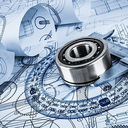Конус Макса — инновация для ключей и механики"
Хочу поделиться концепцией инструмента, который назван "Конус Макса." Это гипотетическая конструкция, которая объединяет принципы механической физики и практическое удобство. Изначально идея была разработана для настройки пианино, где ключ позволяет эффективно работать с колком даже при максимальном сопротивлении в 25 Н·м. Но есть важное расширение: этот инструмент может заменить традиционные Г-образные ключи и Т-бар для работы с гайками, болтами и другими механическими элементами.
Основные преимущества "Конуса Макса":
Удобство: Распределение силы через "колёсико" позволяет приложить меньшие усилия и достичь максимального крутящего момента.
Гибкость: Работает как с двумя руками, так и с одной, обеспечивая оптимальный контроль над процессом.
Эволюция формы: Конусная структура устраняет угловое шатание, характерное для традиционных инструментов.
Расчёты показывают, что "Конус Макса" справляется как с настройкой пианино, так и с любыми механическими задачами, где требуется применение крутящего момента. Это инновация, которая вдохновляет на переосмысление стандартных инструментов. Представьте, как такая конструкция может улучшить работу механиков, инженеров и всех, кто взаимодействует с техникой!
Что думаете о такой идее? Возможно, у вас есть свои мысли о её применении?


Лига технологов
195 постов1.6K подписчика
Правила сообщества
Если вы хотите добавить пост пожалуйста убедитесь что информация в нем правдива.
Посты не по теме,с ложной информацией и т.п. будут удаляться.
Чтобы стать участником Лиги,надо написать мне в личку или призвать в комментариях с просьбой о принятии в Лигу.
Те кто приняты в Лигу,могут помогать пикабушникам от имени Лиги технологов.